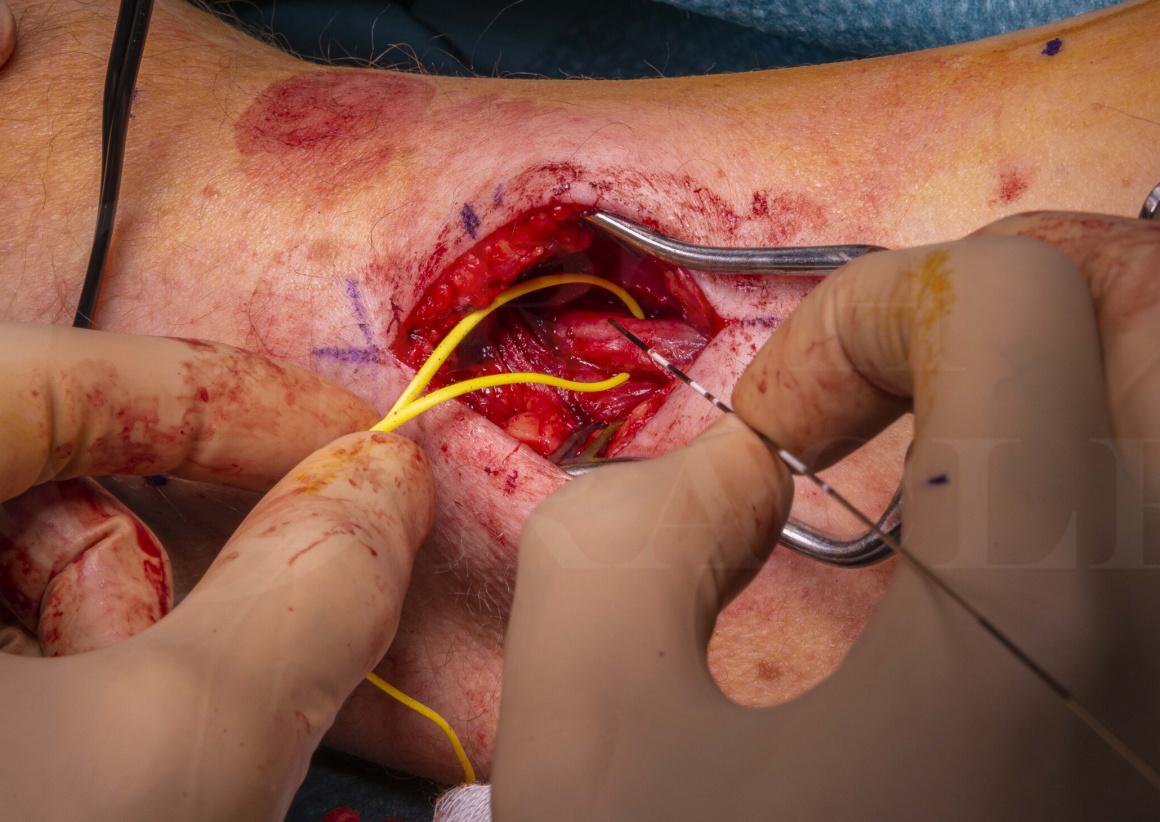Implantation of peripheral nerve stimulator(Stimrouter neuromodulation system)
Overview

Subscribe to get full access to this operation and the extensive Upper Limb & Hand Surgery Atlas.
Learn the Implantation of peripheral nerve stimulator(Stimrouter neuromodulation system) surgical technique with step by step instructions on OrthOracle. Our e-learning platform contains high resolution images and a certified CME of the Implantation of peripheral nerve stimulator(Stimrouter neuromodulation system) surgical procedure.
The use of electrical stimulation for chronic pain has a long history. In the modern era its use spans several decades but it is only over the last 10-12 years, that an evidence base for its use in chronic pain has emerged.
Chronic neuropathic pain remains a huge source of disability and psychological distress and its treatment is difficult and unpredictable.
There are numerous hypothesised mechanisms of action for peripheral nerve stimulators in chronic nerve pain.
The most popular theory is the gate-control theory, which suggest that gates within the dorsal horn laminae in the spinal cord modulate painful and non-painful stimuli via a competitive mechanism. Painful stimuli are carried via small diameter fibres and non-painful stimuli are carried via larger diameter fibres. Flooding the system with non-painful stimuli via the large diameter fibres, closes the gate to the small fibre pathways and reduces the pain signals via these pathways.
Other mechanisms proposed include:
– Stimulation induced blockade of cell membrane conduction, preventing propagation of painful stimuli
– Long-term potentiation of dorsal horn neurones causing decreased excitability and depletion of amino acids such as glutamate and aspartate, which are excitatory amino acids and increased release of inhibitory transmitters such as GABA.
It remains clear that chronic pain is a complex interaction between nerve injury and repair mechanisms, in conjunction with secondary adaptive biological changes, as well as psychological and social factors.
Peripheral nerve stimulation should be seen as one additional technique available to physicians and surgeons treating chronic neuropathic pain. It is important that it is used in the context of a wider appreciation of the causes of pain ensuring that reversible causes are sought and addressed first. Furthermore simpler means of addressing chronic pain must be explored initially as these are successful in many patients.
In general, peripheral nerve stimulation is an option to be considered when a patient’s symptoms have resisted conventional treatment, such as physiotherapy, analgesia, peripheral nerve blockage, desensitisation therapy, exploration, decompression or surgical repair of damaged or entrapped peripheral nerves.
It is important that all chronic pain patients undergo a formal psychological assessment, in order that any psychological contributors are identified and addressed beforehand.
In this section of OrthOracle a peripheral nerve stimulator is implanted into a radial nerve within the arm, to treat chronic unrelenting neuropathic pain carried within fibres of the radial nerve. Onset of pain followed surgery for a malignant tumour in the cervical spine and brachial plexus, which required sacrifice of several nerve roots and injury to others. The pain proved resistant to standard analgesia and neuropathic pain agents and other options were not available.
The peripheral nerve stimulator implanted was the Stimrouter neuromodulation system supplied in the UK by P-14 Medical.
It can be implanted via a percutaneous method or an open surgical method. It is the open surgical technique that is described in this section.
The device includes a low-profile rechargeable external pulse transmitter and a wireless, handheld patient programmer.
Patients apply the external pulse transmitter to the skin in alignment with the implantable lead which sits under the skin. This is done intermittently for minutes or hours at a time and often provides lasting relief for prolonged periods in between stimulation sessions. It is designed to be a long term treatment option.
Readers will also find the following OrthOracle surgical techniques of interest:
Targeted Muscle Reinnervation (TMR) for neuroma treatment following above knee amputation
Author: Tahseen Chaudhry, Consultant Hand and Peripheral Nerve Surgeon
Institution: University Hospital Birmingham, Birmingham, UK.
Clinicians should seek clarification on whether any implant demonstrated is licensed for use in their own country.
In the USA contact: fda.gov
In the UK contact: gov.uk
In the EU contact: ema.europa.eu
Online learning is only available to subscribers.



















